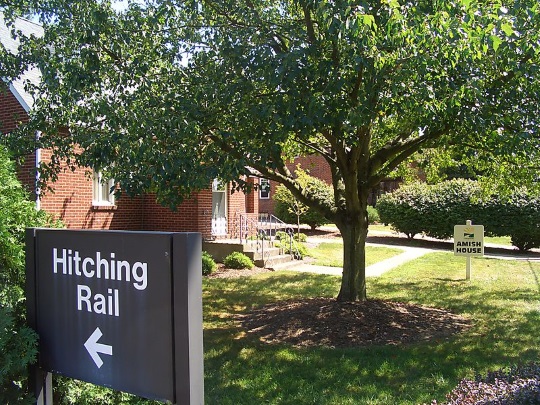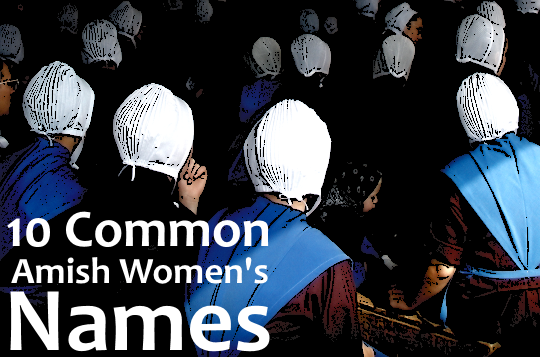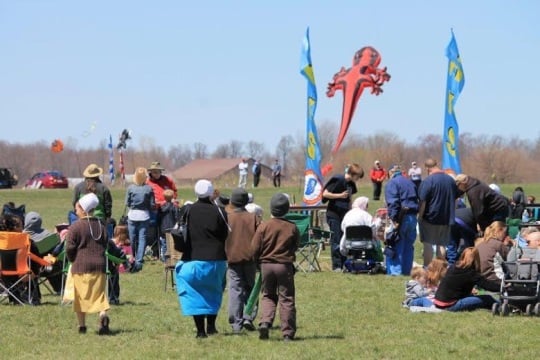How Does An Amish Medical Aid Plan Work?
How do Amish pay medical bills, if they don’t have health insurance?
We get a look at how some Amish handle this in a new piece on Cincinnatti Public Radio.
Amish famously do not use commercial health insurance, opting to rely on their own churches and extended communities when the need is great.
And while a “pass-the-hat” approach may have been more common in the past, numerous Amish communities now have formalized mutual aid programs – which presumably make collecting funds and administering the program simpler.

Amishman Dan Yoder is a key person in the plan used in the Holmes County, Ohio Amish community. He explains how it works:
“Insurance is more for your own benefit,” says Dan Yoder. “The aid plan is when all the church members get together and they try to help everybody else. Not for their own benefits.”
Yoder is a member of the Amish community in Holmes. He pays all the medical bills for his church members and surrounding churches, too, using a fund that everyone contributes to. It costs between $90 and $110 a month per member to participate, what’s called a “self-pay” model.
The negotiating heft of a large, promptly cash-paying community helps the Amish secure favorable rates. The sole hospital in Holmes County, Pomerene Hospital in Millersburg, accepts payment via the Amish fund.
The Amish community doesn’t participate in Medicare or Medicaid, either. Yoder even negotiates with health providers the way an insurance company would to get lower prices for medical care. Often he can secure discounts because they pay all their bills immediately.
“Our health providers will never have a bill that is more than 10 days old,” Yoder says, “versus when the insurance company works with health providers on health care, you’re talking about 8 months to a year before the providers get payment.”
Other large settlements, like Lancaster County, also have formal aid plans.
This community-supported ethos lying behind Amish health care has always had a positive sheen.

However, the other side of the coin – one much less-remarked upon – is that this can lead to some difficult personal dilemmas in deciding whether to pursue a given medical course, given the burden it may impose on the community:
“We do see families really grapple with the burden that they’re going to potentially be with their community at large,” Scott says. “It’s pretty rare that we’ll sit down with a family here the first time and lay out treatment options and that they will consent the first time. They’ll usually tell us they need to go speak with their grandparents, maybe bishops at their church.”
He says in many cases, the church fund will raise money for expensive procedures like bone marrow transplants.
In other cases, however, the group decides the possible benefits for one patient aren’t worth the cost to the whole community.
In some communities, when bills are greater than what the local church or “extended network” can cover, you’ll see other efforts to raise funds.
These can include benefit meals, or auctions which tap support not only from within the Amish but from the outside community as well.
One inspiring example of this were the auctions supporting Amos Hertzler, a boy in New York born with a rare esophageal condition. At least one of those events drew thousands of people.









It's Amish insurance
The Amish may not think they participate in group insurance plans, but the system described here works the same. Everybody pays a monthly premium, their costs are covered, and sometimes the plan denies coverage.
Insurance
Some of them even refer to it as insurance, it used to be by donation but now if you don’t pay your 110.00 premium per month you are not eligible to get help so it’s INSURANCE
Question about who is the insured "member"
“It costs between $90 and $110 a month per member to participate, what’s called a “self-pay” model”
Is a “member” per family or per each individual in the family?
Good question – I read a “member” to be an individual, but wonder how minor children would be counted in that equation if so.
Universal health care
I’m wondering how the Amish relate to the universal health care in countries which have it, like Canada and the UK? Anyone know?
Do you mean what opinion we might expect to hear from an Amish person on the way health care works in those countries? Generally they tend to be for less government involvement, so if I had to guess I don’t think they’d be so keen on those systems. They have a mutual dependence on one another, but it is outside of the state.